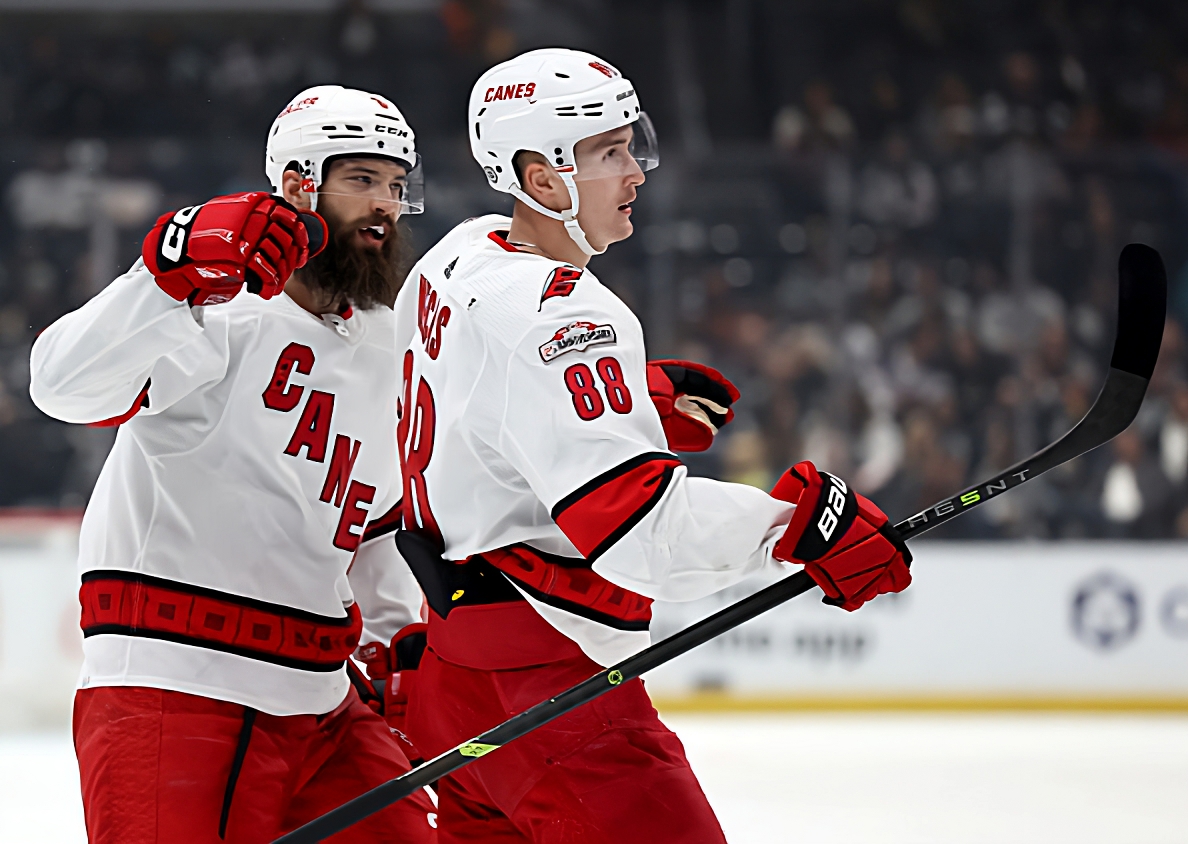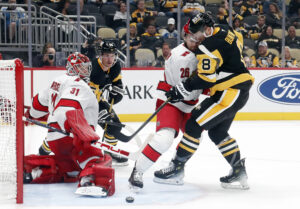With a strong defensive core, solid goaltending, and a deep set of forwards, the Carolina Hurricanes are poised to make a deep run in the 2022-23 Stanley Cup Playoffs. However, while their five-on-five play has been solid, their power play has been less than stellar for a contending team and may negatively affect their playoff performance.
The Carolina Hurricanes Power Play Struggles Will Prove Troublesome in the Playoffs
The Carolina Hurricanes are one of the hottest teams in the NHL and a Stanley Cup contender. It is no secret that the team has bought into Rod Brind’Amour hockey. They possess a relentless attack, heavy forecheck, strong puck possession, and solid 200-foot game while five-on-five.
Sitting at the Bottom
One area that has been this team’s Achilles heel this season is their inconsistent power play. Currently, the Carolina Hurricanes power play percentage is 18.4%. This has them ranked 25th in the league for power play success. No team ranked lower than the Hurricanes for powerplay percentage is currently in a playoff position. Meanwhile, the Edmonton Oilers, Tampa Bay Lightning, and Boston Bruins sit at the top. The Hurricanes power play percentage during the 2021-22 season ended at 22%, good enough to put them at 13th in the league. Their power play percentage ended at 25.6% during the 2020-21 season, good enough for second in the league. This season is quite a drop in power play success.
A Change in Key Power Play Players
The reasoning for the drop in power play success is not entirely clear. Maybe it’s simply bad luck. However, specific changes in personnel were made in the offseason that seem to have affected the power play. Vincent Trocheck signed with the New York Rangers in free agency and was used effectively down low on the power play, notably setting up Sebastian Aho in the low slot. Trocheck finished the season with six power-play goals and 12 power-play points. Likewise, Anthony DeAngelo had 20 power play points last season running the point. DeAngelo’s skating ability made him an effective power-play quarterback for the Hurricanes. DeAngelo was traded as a restricted free agent to the Philadelphia Flyers in the offseason.
New Faces and Breakouts
This season the Hurricanes have used various power play line combinations to get something to click. Brent Burns, acquired in the offseason from the San Jose Sharks, has consistently filled in DeAngelo’s spot as the power play quarterback of the first unit. He is currently tied for the team lead in power play points with 14. Paul Stastny was brought in as a free agent over the summer and has spent some time in Trocheck’s spot down low, albeit with seemingly less success. Stefan Noesen has been relied upon on the power play and has proven to be fairly successful with six power-play goals. Additionally, Martin Necas’ overall improvement has translated to his power-play success with 14 power-play points, good enough to be tied with Burns for first on the team.
Finding a Rhythm
With all of that said, the Hurricanes have been having a tough time consistently clicking on the power play. From an individual points perspective, the personnel changes don’t seem to be too drastic. There is still a lot of skill there. The Hurricanes have players such as Necas and Andrei Svechnikov setting up on the half walls, Burns booming shots from the point, and captain Jordan Staal using his big frame to screen the goalie and get tips in front. You can see flashes of their ability from time to time. But flashes are very different from consistency. And consistently finding chemistry on the power play has been an issue for the Hurricanes.
The 2021-22 Stanley Cup Playoffs
Even with the Hurricanes power play success during the 2021-22 regular season, their power play suffered during the playoffs and greatly affected their second-round exit to the New York Rangers. During the 2021-22 Stanley Cup Playoffs, the Hurricanes power play percentage was 13%, ranking them 12th out of the 16 teams in the playoffs. The eventual Stanley Cup Champions, the Colorado Avalanche, were at the top with a 32.8% power play percentage. That seemed to work out pretty well for them. At the bottom were the Florida Panthers at 3.2%. The Tampa Bay Lightning, in the second round, swept the Panthers. Last year in the playoffs, when the Hurricanes could have really used it, the power play failed to deliver. Looking at history, the Hurricanes’ current lack of power play success is a cause for concern for the 2022-23 Stanley Cup Playoffs.
Playoff Success and the Power Play
While power-play success doesn’t guarantee playoff success, playoff success is typically marked by power-play success. Four out of the last five Stanley Cup Champions ranked in the top five for playoff power play percentage. The only exception is the 2018-19 St. Louis Blues, who had a 16.3% power play percentage and ranked 12th of all playoff teams that year. Notably, the 2018-19 Stanley Cup Final runner-up Boston Bruins lead the playoffs with a 32.4% power play percentage. They took the Blues to seven games that year.
The playoffs are a different type of hockey than the regular season. The play becomes more physical and tighter, and goal-scoring gets tougher. It’s a game of inches and opportunities. Taking advantage of opportunities is what separates success from failure. While power play effectiveness is not a guarantee for playoff success, history shows that it is frequently a characteristic of championship teams. The Carolina Hurricanes power play will need more consistency to take them over the hump in the 2022-23 Stanley Cup Playoffs.
Main Photo:
Embed from Getty Images






